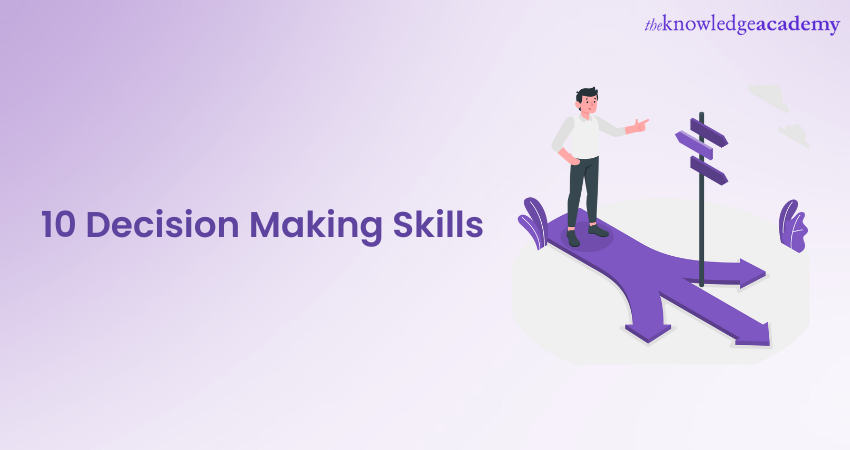In the rapidly changing realm of business, the capacity to formulate effective decisions is crucial. With countless variables at play and constant stress to perform, refining your decision-making skills can distinguish you from the rivals. Mastering improve decision-making of strategic decision-making not only boosts personal effectiveness but also plays a significant role significantly to the overall success of an organization. From strategic choices that influence the future of a company to daily routine choices, the risks are high, and the results can have lasting consequences.
This article examines established techniques to sharpen your decision-making skills, addressing aspects such as the psychology behind great decisions to the significance of emotional intelligence and awareness. You will learn how to analyze options thoroughly, avoid decision fatigue, and embrace both intuition and evidence-based insights. If you're a leader facing difficult choices or an individual seeking to make better choices under stress, these tactics will enable you to maneuver through the complexities of decision-making with assurance and clarity.
Proven Strategies for Improved Decision-Making
To improve decision making skills, it is crucial to implement useful techniques that encourage clarification and confidence. One powerful method is to create a decision-making structure. This involves setting parameters for choices and assessing each one against these benchmarks. Using tools such as SWOT matrix or decision-making trees can organize thoughts and promote a organized approach. This not only aids in mapping potential outcomes but also redirects attention from instinctive responses to logical evaluation.
Another valuable technique is to utilize mindful awareness, which plays a vital role in lessening rash decisions. By taking a moment to stop and consider, individuals can define their thoughts and feelings regarding the situation at play. Mindfulness cultivates a greater awareness of biases and emotions, allowing one to disconnect from present stressors and reflect on implications more broadly. Additional info for reflection often results in more deliberate choices that align with long-term goals.
Additionally, accepting collaborative decision making can significantly boost the quality of results. Working together with others provides diverse viewpoints that can reveal blind spots and discover hidden options. Utilizing collaborative brainstorming or consensus methods can aid in arriving at outcomes more quickly and with more buy-in. Sharing the decision making process not only enriches the decision but also cultivates a culture of teamwork and shared ownership.
The Role of Instinct and Emotion in Decisions

Instinct often acts as a guiding force in making choices, allowing individuals to draw upon their subconscious knowledge and experiences. This instinct can surface when a person is confronted with choices, providing immediate insights that are not always accessible through rational analysis. Many successful leaders credit their ability to make quick decisions to their reliance on intuition, which can be particularly valuable in high-pressure situations where time is constrained.
Emotions play a significant role in shaping decisions, influencing how we perceive situations and evaluate options. Positive feelings can enhance creativity and encourage risk-taking, while negative emotions might lead to caution or despair. Understanding one's emotional state is vital, as it can either cloud judgment or provide clarity. Recognizing how emotions impact decision-making helps individuals navigate through complex decisions with a greater sense of clarity.
However, relying solely on gut feeling and emotion can sometimes lead to suboptimal decisions if not balanced with rational thought. It is important to find a compromise where intuitive insights are supported by data and reasoned thought. By creating a framework that integrates both emotional insight and logical reasoning, individuals can enhance their decision-making, leading to improved and confident outcomes.
Strategies to Overcome Decision Making Challenges
An successful strategy to tackle decision-making difficulties is to establish a defined methodology for evaluating options. By developing a organized process that includes identifying the problem, discovering alternatives, and considering the pros and cons, decision-makers can clarify complex decisions. This technique reduces the cognitive effort and helps in understanding the consequences of each option, leading to more informed choices. Using analytical tools, such as decision-making trees or SWOT evaluations, can improve clarity and promote a systematic approach.
Another important tactic is to cultivate emotional awareness, which enables people to manage their feelings and biases during the decision-making process. Becoming aware of emotional influences can avoid impulsive decisions based on fleeting feelings. Practicing mindfulness can enhance this by building a higher awareness of one's thought processes and cultivating a calmer mindset. This clarity is essential when confronting tense situations or when doubt looms, enabling a more reflective and confident decision making process.
Ultimately, seeking different perspectives can dramatically boost decision quality. Collaborative decision-making fosters the sharing of insights and experiences, which can reveal blind spots and present new angles to consider. Working with a diverse group can lead to more comprehensive evaluations and encourage consensus, making the decision not only more solid but also more widely accepted. This team approach can significantly minimize the concern of making the wrong choice, as the support and feedback from others provide a buffer for singular decision-makers.
